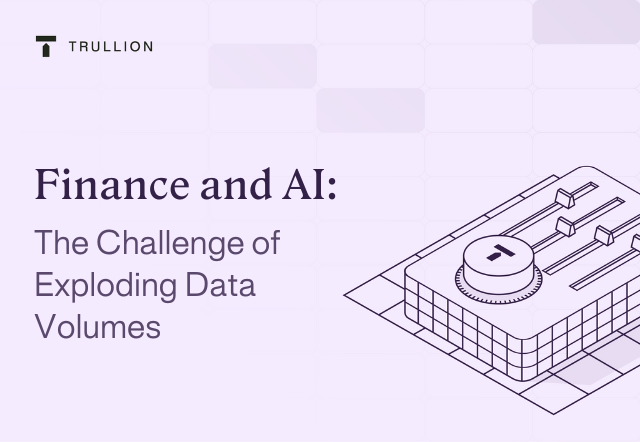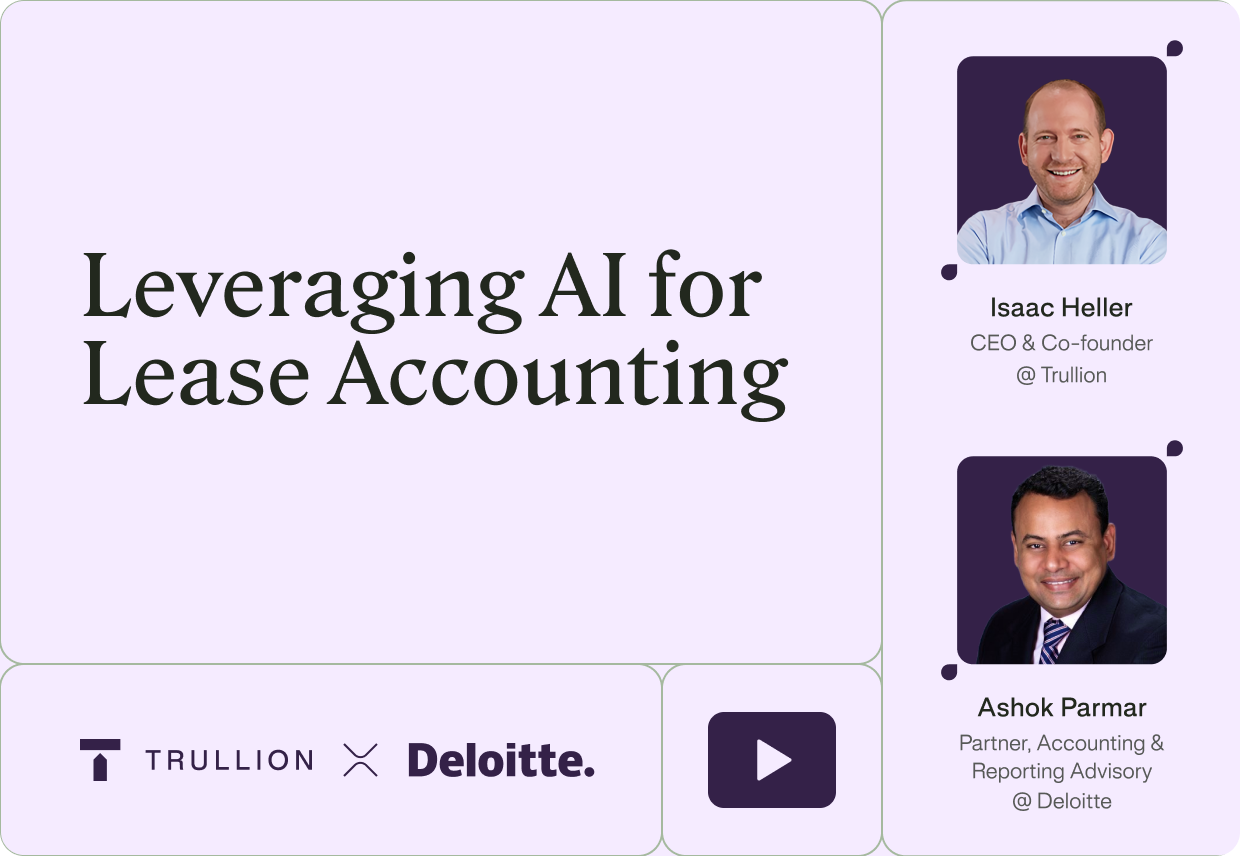Data as a CFO priority
Questions around increasing volumes of data were traditionally not high on the CFO’s agenda. Today however, that is simply not the case.
When it comes to accounting, CFOs now realize the tremendous potential value that data provides, especially when this data is leveraged by AI models.
This new era is full of exciting insights and new possibilities. To capitalize on these, CFOs must understand the context of growing data volumes – and prepare to finance automation and artificial intelligence capabilities for their business.
Finance and AI: how more data means more time
Today there is much more data generated than ever before, from a wider range of inputs. And with artificial intelligence for finance autonomously interacting with data and generating additional subsequent data, there is an unprecedented explosion of information.
As Shlomo Agishtein, Trullion AI Team Lead puts it, “Leveraging data to generate further data is a core tenet of AI. We can enrich unstructured and structured data to arrive at new models, which in turn reveal informational as well as actionable insights that would never have been visible from the initial data points. The potential is truly above and beyond the scope of any manual approach.”
Much of the data being leveraged today is unstructured, which in the past used to pose a thorny challenge in terms of extracting value from documents and PDF’s for example. Today, unstructured data can be harnessed in the service of AI models, through the use of Natural Language Processing (NLP) and Optical Character Recognition (OCR) which enable previously siloed information to inform Large Language Models (LLM).
The good news for CFOs is that even though there is more data being generated than ever before, process automation should result in less manual work and a greater impact on CFOs and accounting professionals within the organization.
CFOs and accounting leaders are now aware of how AI can automate repetitive tasks, thus saving time and increasing accuracy.
But on a deeper level, leading CFOs are also using large data sets to connect data points, infer meaning and relationships, and surface key actionable insights or red flags.
Contrasting types and sources of data
A recent Forbes article highlighted the need to access and harness unstructured data, as opposed to structured data which is easier to manage. The article highlights the fact that “The leading analytics tools were designed and optimized for structured data, which resides in a standardized format in a traditional or cloud warehouse such as a SQL database. Unstructured data like documents, images, videos, and advanced architectural, engineering, and manufacturing models are not so easily crammed into tables.”
It also notes that “Data has evolved into a globally accessible asset that can be utilized in new and creative ways. The era of big data may be more than a decade old, but this new era of insights and intelligence that data delivers could prove to be even more transformative.”
Today, structured and unstructured data is both fed into and generated by, financial reporting systems such as ERPs.
In the past, this workflow process was relatively straightforward: structured, quantitative data was input into the system from tools such as Excel or Salesforce, judgments were applied based on relatively simple rules, and quantitative financial reporting was the result.
Compare this to what’s developing currently, where unstructured data can be fed into the system, AI extracts key information from this data, complex rules and judgments can be applied, and qualitative, more valuable financial reporting is the end result.
The possibilities of a unified data environment are tantalizing: for example, ongoing, real-time augmentation of data from new, untapped sources (consider that currently, less than 10% of auditable financial data is stored in the GL/ERP).
The value that can be added – not to mention time and other resources saved – is tremendous.
Workflows must adapt – led by the CFO
What follows naturally from this observation – that the nature and scope of data have changed dramatically – is that organizations are going to have to adapt quickly to this new reality of massive amounts of data. Increasingly, business information that is relevant for reporting standards, is becoming unmanageable for existing reporting management frameworks.
Traditional workflows can handle traditional volumes and formats of data. When fed vast amounts of data, specifically unstructured data, these workflows will not be able to cope.
This is not a trend predicted for years ahead – this is something that is happening right now.
Organizations need to incorporate AI for finance into their workflows as soon as possible: to deal with this massive increase in data; harness it and generate value-adding insights and reports; and lead competitors when it comes to taking advantage of the unique opportunity that huge data sets and AI presents.
A great first step for finance and audit teams is to focus on one or two areas of the business that can benefit from the tangible process and performance improvements through automation. Trullion is an AI-powered platform that connects structured and unstructured data to accelerate value, ensure compliance and accuracy, and automate workflows for accounting, audit, and finance teams.
To get started, set up a call with a Trullion expert today.










